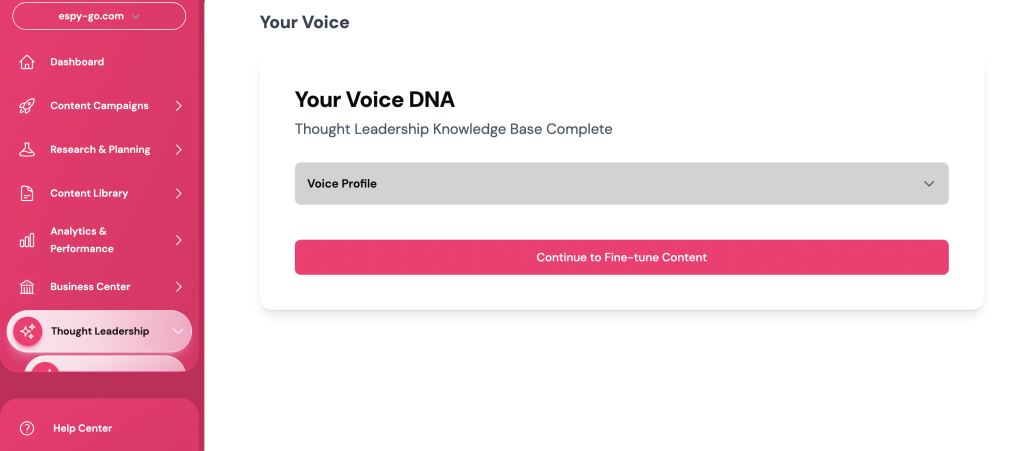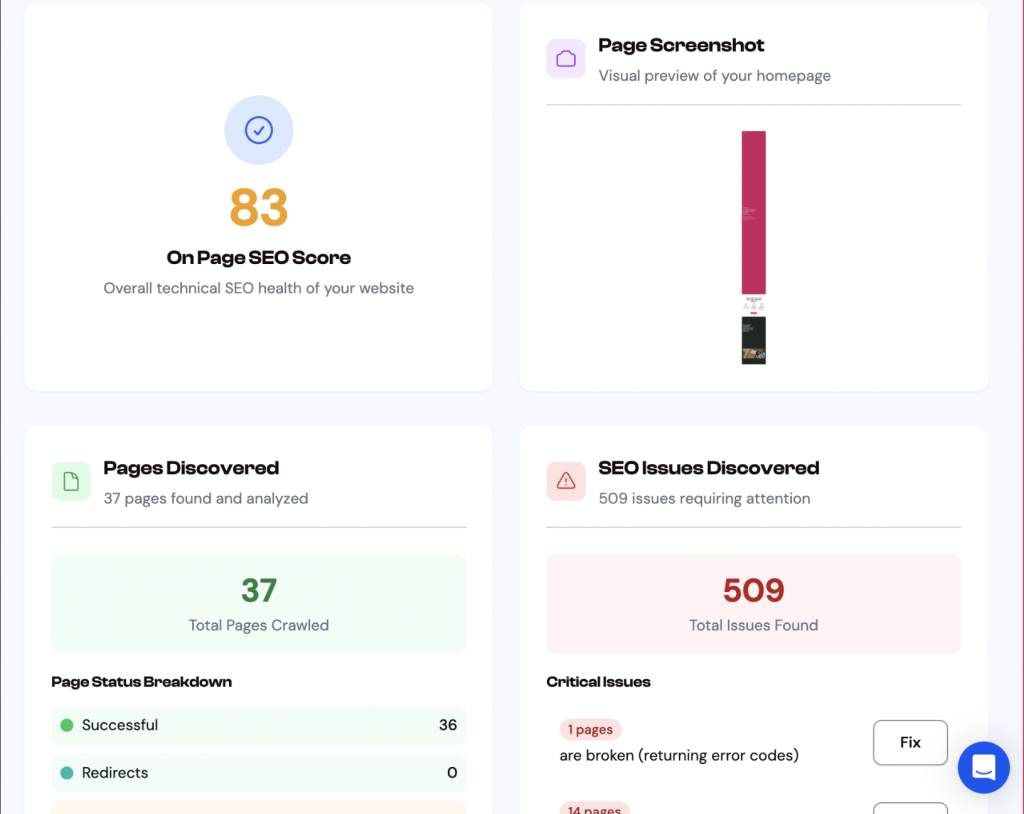Your brand might rank on page one of Google, but when someone asks ChatGPT for the best project management tools, you’re nowhere to be found. Meanwhile, your competitors are getting glowing AI recommendations, capturing potential customers before they even reach traditional search results. The harsh reality? AI models like ChatGPT and Bard are becoming the new search engines, but they don’t discover brands the same way Google does. While you’ve mastered keyword optimisation and link building, AI models operate on entirely different principles—they prioritise entity recognition, authority signals, and structured data that most brands haven’t even considered. Here’s what you’ll discover: The specific techniques that make AI models recognise and recommend your brand when users ask for solutions in your category. We’ll uncover why AI brand visibility differs from traditional SEO, how to build entity authority that AI models trust, and actionable steps to train these systems to include your brand in their recommendations.
This isn’t about gaming algorithms—it’s about making your brand genuinely discoverable in the AI-driven search landscape that’s reshaping how B2B buyers find solutions.
Why AI Models Ignore Most Brands (And Why Yours Might Be One of Them)
The frustration is real: you’ve invested thousands in SEO, built quality backlinks, and created comprehensive content. Yet when potential customers ask ChatGPT to “recommend best AI SEO Tools,” your brand doesn’t appear. Understanding why requires grasping how AI discovery fundamentally differs from traditional search.
How AI Models Actually Find Brands
Unlike Google’s web crawlers that index billions of pages, AI models rely on entity recognition—they need to understand what your brand is rather than just what keywords you rank for. When ChatGPT recommends Slack for team communication, it’s not because Slack has the best SEO for “team messaging software.” It’s because the AI model has encountered consistent, authoritative information about Slack being a business communication platform across multiple trusted sources.
The critical difference: AI models prioritise brands with strong entity profiles over traditional SEO metrics. They’ve been trained on data from authoritative sources like Wikipedia, industry publications, academic papers, and established directories. If your brand lacks presence in these authoritative sources, you simply don’t exist in the AI’s knowledge base.
Consider this: HubSpot appears frequently in AI-generated marketing tool recommendations not just because of their SEO dominance, but because they have:
- Comprehensive Wikipedia entries
- Consistent mentions in industry reports
- Structured company data across platforms
- Clear, consistent descriptions of their services
- Strong founder and leadership profiles
Meanwhile, newer or smaller SaaS brands often have fragmented mentions, inconsistent descriptions, and weak entity signals that AI models can’t piece together into a coherent understanding.
The Entity Authority Gap
Here’s where most brands fall short: they have weak entity profiles that AI models can’t interpret or trust. Traditional backlinks don’t translate to AI recognition because AI models struggle to connect fragmented brand mentions across different contexts.
When you ask ChatGPT about email marketing tools, it might recommend Mailchimp, ConvertKit, and Campaign Monitor. But it rarely mentions smaller competitors because those brands haven’t established the consistent identity signals that AI models require. The AI encounters mentions of these smaller brands but can’t confidently categorise them or understand their positioning.
This creates an entity authority gap where established brands with clear positioning dominate AI recommendations, while newer or less-documented brands remain invisible—regardless of their actual product quality or market performance.
The solution isn’t more backlinks or better keyword targeting. It’s about building comprehensive entity profiles that AI models can understand, categorise, and confidently recommend to users.
Building Your Brand’s AI-Readable Entity Profile
Creating AI visibility requires a systematic approach to entity optimisation. Think of it as teaching AI models who you are, what you do, and why you’re trustworthy—across multiple touchpoints they recognise as authoritative.
Create Consistent Brand Entities Across Platforms
Standardise your company descriptions everywhere your brand appears. AI models need consistent signals to build confidence in recommending your brand. This means having identical or very similar company descriptions across:
- Your website’s About page
- LinkedIn company profile
- Crunchbase listing
- Industry directories
- Review platforms like G2 or Capterra
Your description should clearly state what category you’re in, who you serve, and your key differentiator. For example: “Acme Analytics is a customer behaviour analytics platform that helps e-commerce brands increase conversion rates through AI-powered insights.”
Implement structured data markup on your website using Schema.org vocabulary. This helps AI models understand your organisation structure, products, and relationships. Essential markup types include:
- Organisation schema for company information
- Product schema for your offerings
- Person schema for founders and key team members
- Review schema for customer testimonials
Maintain consistent founder and leadership profiles across platforms. AI models often connect brands through their leadership, so ensure founder LinkedIn profiles, speaker bios, and company leadership pages tell the same story about your brand’s expertise and positioning.
Build Authority Signals AI Models Trust
AI models have been trained primarily on authoritative sources, so appearing in these sources dramatically improves your visibility. Industry reports and surveys are goldmines for AI training data. Get your brand included by:
- Participating in Gartner Magic Quadrants or similar industry analyses
- Contributing data to State of [Industry] reports
- Being featured in comparative studies by research firms
Wikipedia and industry wikis carry enormous weight with AI models. While creating your own Wikipedia page might be challenging, you can:
- Get mentioned in relevant industry category pages
- Have your founder contribute to or be mentioned in relevant articles
- Ensure your brand appears in software comparison tables or industry listings
Academic papers and research provide another authority boost. Collaborate with universities on industry research, sponsor academic studies, or have your data cited in peer-reviewed publications.
Optimise Content for Entity Recognition
Write content that clearly defines what your brand does without assuming prior knowledge. AI models need explicit context about your industry positioning, target market, and core functionality. Your homepage, About page, and key product pages should immediately clarify:
- What category of software/service you provide
- Who your ideal customers are
- How you differ from competitors
- What specific problems you solve
Use specific industry terminology consistently rather than creative marketing language. If you’re a “marketing automation platform,” use that exact phrase rather than inventing terms like “growth acceleration suite.” AI models rely on established terminology to categorise and recommend brands.
Create comprehensive company information that reads like an encyclopaedia entry. Your About page should cover founding story, mission, key milestones, leadership team, and clear service descriptions. This gives AI models the comprehensive context they need to understand and recommend your brand appropriately.
Practical Steps to Train AI Models on Your Brand
Now for the tactical execution: a systematic approach to building AI visibility that you can implement immediately.
The 90-Day AI Visibility Action Plan
Weeks 1-2: Entity Audit
Start by auditing your current entity presence. Search for your brand name on ChatGPT, Bard, and Claude. Note how (or if) they describe your company, what category they place you in, and whether they include you in relevant recommendations.
Create a spreadsheet tracking your brand mentions across:
- Major directories (Crunchbase, AngelList, Product Hunt)
- Review platforms (G2, Capterra, TrustPilot)
- Industry publications and blogs
- Social platforms (LinkedIn, Twitter company pages)
- Your own website content
Weeks 3-8: Content and Markup Optimisation
Standardise your brand description across all platforms using your chosen positioning statement. Implement structured data markup on your website—start with Organisation, Product, and Review schemas.
Update your About page, product descriptions, and leadership bios to be more encyclopaedic and AI-readable. Remove marketing fluff and add clear, factual descriptions of what you do and who you serve.
Weeks 9-12: Authority Building and Testing
Focus on securing mentions in authoritative sources. Pitch industry publications for expert commentary, participate in relevant surveys, and seek speaking opportunities at conferences that publish speaker information online.
Test your progress monthly using specific prompts like:
- “What are the best [your category] tools for [your target market]?”
- “Compare popular [your category] solutions”
- “Tell me about [your brand name]”
Testing and Measuring AI Visibility
Use specific prompts to test brand mentions across different AI models. Create a testing framework with prompts that should theoretically include your brand:
- Direct brand queries: “What is [Brand Name]?”
- Category queries: “Best [category] tools for [target market]”
- Comparison queries: “Compare [your brand] vs [competitor]”
- Solution queries: “Tools to solve [specific problem you address]”
Track competitor mentions for benchmarking. Monitor how often your main competitors appear in AI responses and in what context. This helps you understand the competitive landscape and identify gaps in your own entity profile.
Monitor changes in AI responses over time by re-running your test prompts monthly. Keep a record of how AI models describe your brand and whether they include you in recommendations. This helps you measure the impact of your optimisation efforts and identify areas needing improvement.
Remember: AI model updates can change how brands are referenced, so consistent monitoring and optimisation is essential for maintaining visibility in AI-generated recommendations.
Advanced Strategies for Entity Authority
Beyond the fundamentals, sophisticated brands are implementing advanced techniques to dominate AI recommendations in their categories.
Content Syndication and Thought Leadership

Establish your founders as industry authorities through consistent thought leadership content. When AI models encounter the same expert opinions and insights across multiple authoritative sources, they strengthen the connection between your brand and industry expertise.
Create a content distribution strategy that places your leadership team’s insights on:
- Industry publication guest posts
- Podcast appearances with transcripts
- Conference presentations with published materials
- Expert roundtables and panel discussions
Develop proprietary research and data that other publications reference. When your brand becomes the source for industry statistics or insights, AI models begin associating you with authoritative information in your category.
Strategic Partnership and Integration Mentions
Leverage integration partnerships for entity association. When your brand integrates with established platforms like Salesforce, HubSpot, or Slack, these partnerships create entity connections that AI models recognise and value.
Ensure partnership announcements and integration pages clearly describe:
- What your integration does
- Which specific problems it solves
- How it enhances the partner platform
- Your role in the partnership ecosystem
Co-marketing with established brands creates entity authority by association. Joint webinars, co-authored content, and partnership case studies help AI models understand your brand’s position in the broader technology ecosystem.
International and Localised Entity Building
For brands operating in multiple markets, create localised entity profiles that AI models can recognise across different regions. This includes:
- Country-specific company registrations and directories
- Local industry association memberships
- Regional media mentions and thought leadership
- Localised customer case studies and testimonials
Common Mistakes That Harm AI Brand Visibility
Understanding what not to do is equally important for building effective AI entity profiles.
Inconsistent Brand Messaging
Conflicting descriptions across platforms confuse AI models and weaken entity recognition. If your LinkedIn describes you as a “marketing automation platform” while your website calls you a “customer engagement solution,” AI models struggle to categorise your brand consistently.
Frequent rebranding or positioning changes dilute entity authority. While pivoting might be necessary for business reasons, frequent changes make it difficult for AI models to maintain stable entity profiles for your brand.
Over-Optimisation and Manipulation
Keyword stuffing in company descriptions actually hurts AI visibility. AI models are trained to recognise natural language patterns, so overly optimised or unnatural descriptions may be discounted or ignored.
Creating fake authority signals through purchased mentions or artificial reviews can backfire. AI models are increasingly sophisticated at identifying inauthentic content, and questionable sources can harm rather than help your entity profile.
Neglecting Structured Data
Missing or incorrect Schema markup represents a significant missed opportunity. Many brands invest heavily in content but fail to implement the structured data that helps AI models understand and categorise that content effectively.
Incomplete company information across platforms creates gaps in your entity profile. AI models prefer comprehensive information, so partial or inconsistent data reduces confidence in brand recommendations.
The EspyGo Advantage: Build AI Visibility the Smart Way

Getting your SaaS brand recognised by AI search engines doesn’t have to involve guesswork. EspyGo helps marketing and content teams understand how AI platforms like ChatGPT, Claude, and Perplexity interpret your brand — and how to strengthen the signals they trust most.
Entity Signal Insights: EspyGo identifies inconsistencies in how your brand is described across platforms and helps you fix them — improving how AI systems understand your business.
AI Visibility Tracking: Monitor your brand’s presence and mention trends across AI-driven search experiences, giving you visibility insights beyond Google rankings.
Structured Data Simplified: EspyGo highlights which schema and metadata improvements help make your content clearer and more AI-readable — no technical setup required.
Visibility Intelligence Dashboard: Track your AI search footprint, competitor mentions, and entity authority over time — all in one intuitive hub.
The Future of AI-Driven Brand Discovery
As AI models become more sophisticated and widely adopted, the importance of entity optimisation will only grow.
Emerging AI Platforms
New AI search engines like Perplexity and You.com are already changing how users discover brands. These platforms combine traditional search with AI-generated answers, creating new opportunities for optimised brands while making invisible brands even more so.
Voice assistants and conversational AI will increasingly influence purchase decisions. As these platforms become more sophisticated, they’ll rely heavily on the same entity signals we’ve discussed for brand recommendations.
Evolving Entity Requirements
Real-time information integration is becoming more important as AI models access current data. Brands need to ensure their latest information, achievements, and offerings are consistently reflected across all entity touchpoints.
Multi-modal entity recognition incorporating images, videos, and interactive content will likely become more important as AI models become more sophisticated in processing different content types.
Conclusion
AI visibility requires a fundamentally different approach than traditional SEO. Instead of optimising for keyword rankings, you need to build entity authority through consistent brand signals, authoritative mentions, and structured data that AI models can understand and trust.
The brands winning in AI search aren’t necessarily those with the best SEO—they’re the ones with comprehensive entity profiles that clearly communicate what they do, who they serve, and why they’re credible solutions in their category.
Your immediate next steps: Start with the entity audit to understand your current AI visibility, then systematically build consistent brand descriptions and authoritative mentions across the platforms AI models trust most. The 90-day action plan provides your roadmap, but success requires consistent execution and regular testing to measure progress.
The AI-driven search landscape is still emerging, giving early movers a significant advantage in building the entity authority that will drive visibility for years to come. The brands that act now will establish the foundation for AI recommendation dominance, while those who wait risk becoming invisible in the new search paradigm.
Remember: This isn’t about gaming systems—it’s about building genuine authority and clear communication that helps both AI models and humans understand why your brand deserves consideration. The techniques that work for AI visibility also improve human comprehension, making this investment beneficial across all channels.
Start today, measure consistently, and adapt as the AI landscape evolves. Your future customers are already asking AI for recommendations—make sure your brand is part of the answer.
💡 Ready to get your brand recognised by ChatGPT (for the right reasons)?
👉 Start your free EspyGo trial and see how quickly visibility turns into authority.
